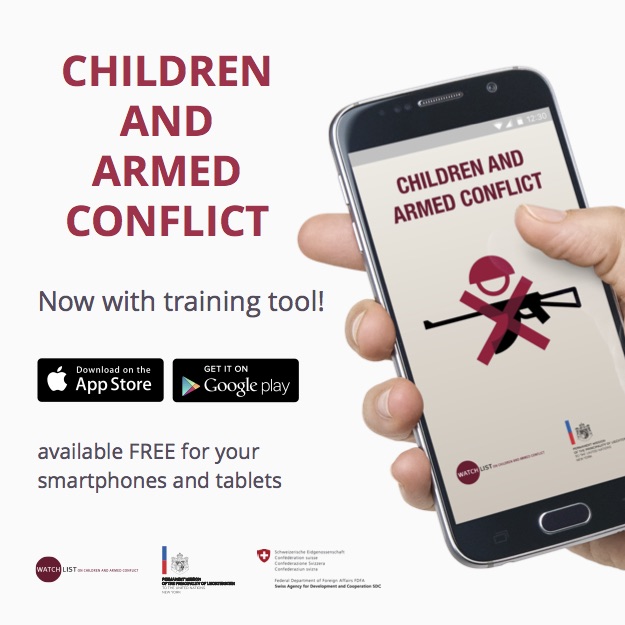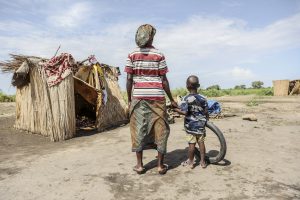Iraq
Advocacy
In the SG’s latest annual report on CAAC, Da’esh is listed for all “five” trigger violations against children. The UN verified 61 grave violations against 57 children in 2023, as well as an additional 16 grave violations from previous years. At the end of 2023, 749 children remained detained on national security-related charges, primarily for alleged association with Da’esh. The UN also verified the killing and maiming of 52 children, primarily due to explosive ordnance, as well as sexual violence against three girls, five abductions of children, and one attack on a school. In addition, 16 schools continued to be used for military purposes by the Iraqi Federal Police and Popular Mobilization Forces in 2023. In November, the SG is expected to report on the transition of UNAMI’s responsibilities and its residual tasks, pursuant to SCR 2732 (2024). In August, the Security Council Working Group on CAAC (SCWG-CAAC) adopted its conclusions in response to the SG’s fifth report on CAAC in Iraq (S/2024/247). The Security Council should:
- Encourage the Popular Mobilization Forces to continue to take steps toward full implementation of all aspects of its 2023 action plan and to sustain gains toward preventing any future recurrence of recruitment and use of children;
- Recall that all children allegedly associated with armed forces and armed groups (CAAFAG) should be treated primarily as victims, including those allegedly associated with armed groups designated as terrorist by the UN and those who may have committed crimes, their reintegration should be prioritized, and detention should only be used as a last resort and for the shortest appropriate time; encourage the Government to continue its efforts to repatriate children held in Northeast Syria, following a rights-based approach, in accordance with their duty under international law;
- Call on the Government to endorse the Paris Principles and Commitments and encourage the development and signing of a handover protocol to facilitate the release of children to child protection actors for reintegration and other support services; urge donors to provide long-term, predictable funding for reintegration;
- Call on all parties to immediately cease attacks on schools and education personnel and to take concrete measures to mitigate and avoid the military use of schools, pursuant to SCR 2601 (2021); encourage the Government to uphold its commitments under the Safe Schools Declaration;
- Call on the Government to implement international legal instruments on landmines and other explosive remnants of war, and to promote mine clearance and age-appropriate explosive ordnance risk education, conflict preparedness, and protection for affected communities.
- Call on all parties to swiftly and fully implement the recommendations of the SCWG-CAAC, as elaborated in its fifth conclusions on Iraq.
THE UNITED STATES IS THE SECURITY COUNCIL PENHOLDER ON IRAQ.
This information is based on Watchlist’s Children and Armed Conflict Monthly Update – November 2024.
In March, the SG published his fifth report on the situation of CAAC in Iraq (S/2024/247), covering a reporting period from July 2021 to September 2023. During this period, the UN Country Task Force on Monitoring and Reporting (CTFMR) verified 381 grave violations against 289 children (218 boys, 70 girls, 1 of unknown sex) and an additional 48 grave violations that had occurred in a previous reporting period. Killing and maiming remained the most prominent grave violation verified (236), followed by the denial of humanitarian access (76), and recruitment and use (32). Most incidents of killing and maiming of children were not attributed to a specific perpetrator, with 65 percent of child casualties due to explosive ordnance and improvised explosive devices (IEDs). Other child casualties were attributed to ground engagements (62) and airstrikes (20). Recruitment and use significantly increased compared to the previous reporting period, and the CTFMR has indicated that the actual number is likely to be higher due to accessibility and security challenges to reporting and verification. The majority of recruitment and use cases were attributed to People’s Defence Forces of the Kurdistan Workers’ Party (HPG/PKK). At the end of the reporting period, a total of 668 children continued to be detained on national security related charges, some as young as nine years old. The CTFMR verified rape and sexual violence against eight girls, as well as late-verification of this grave violation against an additional 14 girls – all cases were attributed to Da’esh. In addition to six attacks on schools and hospitals, 42 incidents of the military use of schools were verified, the majority of which were by Iraqi police (28) and security forces (7). The Working Group should:
- Strongly condemn all continuing grave violations against children in Iraq and demand that all parties to conflict fully uphold their obligations under international humanitarian law (IHL) and human rights law (IHRL);
- Express concern at the increased incidents of recruitment and use of children and call for all armed groups to immediately release all children under 18 years old from their ranks and to engage with the UN to end and prevent grave violations against children; Encourage the Popular Mobilization Forces to continue to take steps toward full implementation of all aspects of its 2023 action plan and to sustain gains toward preventing any future recurrence of recruitment and use of children;
- Recall that all children allegedly associated with armed forces and armed groups should be treated primarily as victims, including those allegedly associated with armed groups designated as terrorist by the UN and those who may have committed crimes, their reintegration should be prioritized, and detention should only be used as a last resort and for the shortest appropriate time; encourage the Government to continue its efforts to repatriate children held in Northeast Syria, following a rights-based approach, in accordance with their duty under international law;
- Call on the Government to endorse the Paris Principles and Commitments and encourage the development and signing of a handover protocol to facilitate the release of children to child protection actors for reintegration and other support services; urge donors to provide long-term, predictable funding for reintegration;
- Call on all parties to immediately cease attacks on schools and education personnel and to take concrete measures to mitigate and avoid the military use of schools, pursuant to SCR 2601 (2021); encourage the Government to uphold its commitments under the Safe Schools Declaration;
- Urge the Government to intensify efforts to remove administrative barriers hindering the delivery of humanitarian aid to civilians, including children, and to issue identification documents to allow all children to access public assistance and basic services, including education;
- Call on the Government to implement international legal instruments on IEDs, landmines, and other ERW, and to promote mine clearance and explosive ordnance risk education, conflict preparedness, and protection for affected communities.
This information is based on Watchlist’s Children and Armed Conflict Monthly Update – May 2024.
UN Action
Year listed: 2009
Action Plans signed: No
Sanctions Committee: 1518 Sanctions Committee; ISIL (Da’esh) & Al-Qaida Sanctions Committee (Current Chair: Indonesia)
Secretary-General’s reports on CAAC in Iraq: 2022; 2019; 2015; 2011
Security Council Working Group conclusions on Iraq: 2020; 2016; 2011
UN Mission: UNAMI
Perpetrators listed in the annexes of the Secretary-General’s annual reports on children and armed conflict
| 2001 | 2002 | 2003 | 2005 | 2006 | 2007 | 2009 | 2010 | 2011 | 2012 | 2013 | 2014 | 2015 | 2016 | 2017 | |
|---|---|---|---|---|---|---|---|---|---|---|---|---|---|---|---|
| Al-Qaida in Iraq (AQ-I)* | a, b | a | a | a, b, d | a, b, d | a,b,d | |||||||||
| Islamic State of Iraq and the Levant (ISIL)* | a, b | a, b, d | a, b, d | a,b,d | a,b,c,d | a,b,c,d,e | a,b,c,d,e | ||||||||
| Popular mobilization forces | a |
a: Parties that recruit and use children
b: Parties that kill and maim children
c: Parties that commit rape and other forms of sexual violence against children
d: Parties that engage in attacks on schools and/or hospitals
e: Parties that engage in abduction of children
f: Parties that deny humanitarian access to children
~ This party has concluded an action plan with the United Nations in line with Security Council resolutions 1539 (2004) and 1612 (2005).
* This party has been in the annexes for at least five years and is therefore considered a persistent perpetrator.




